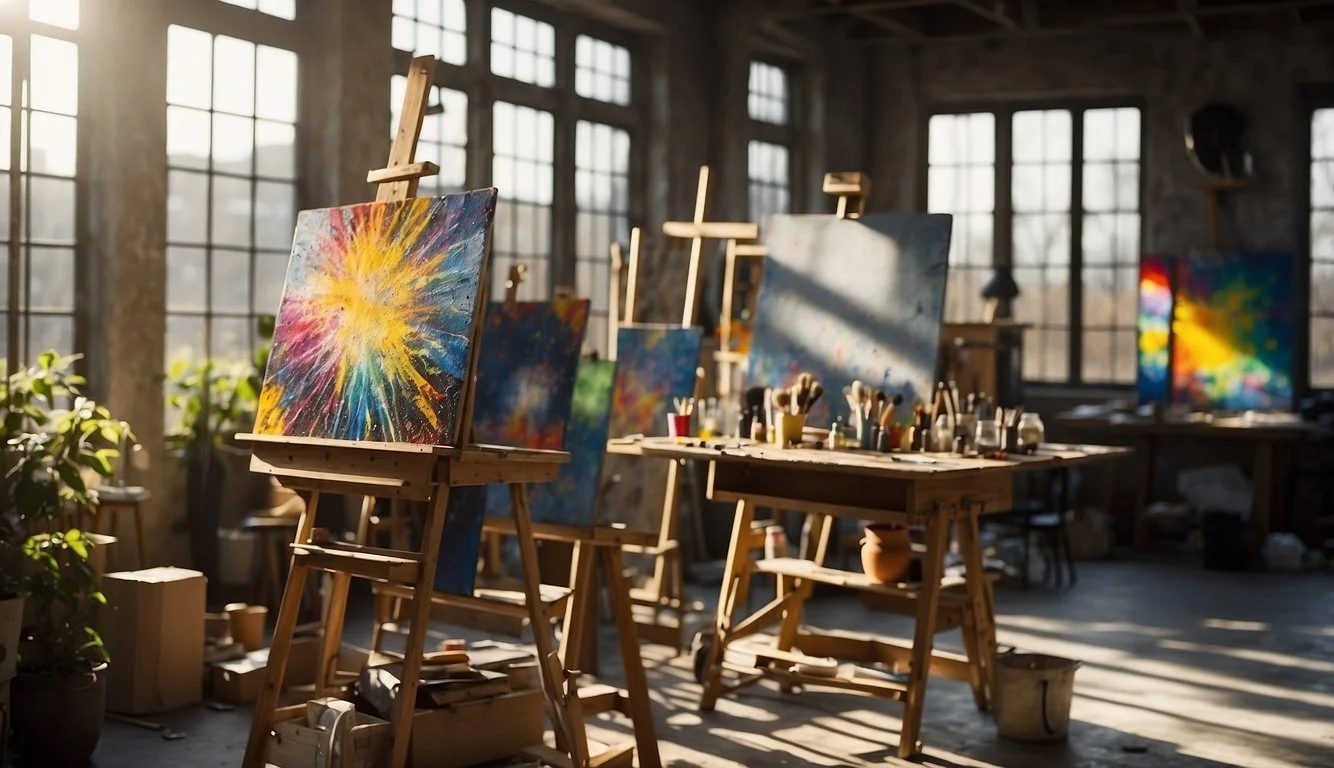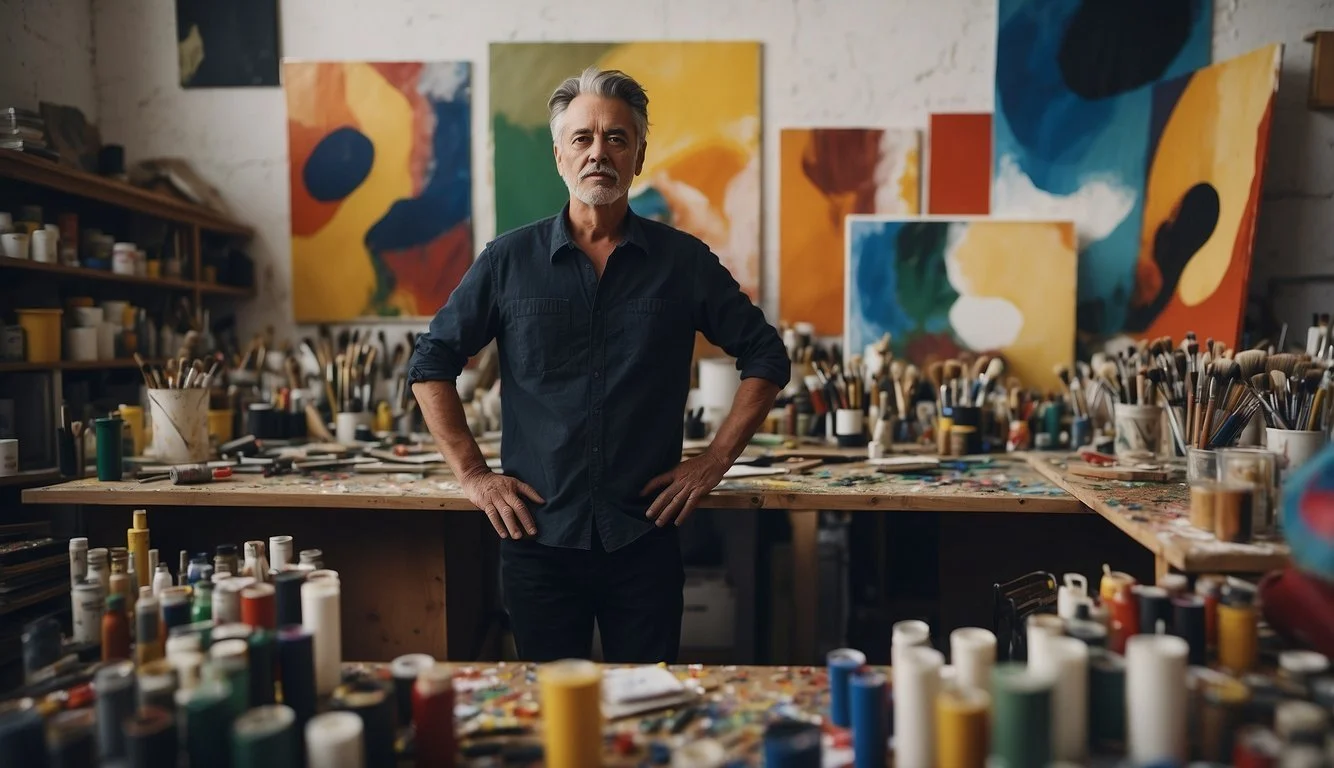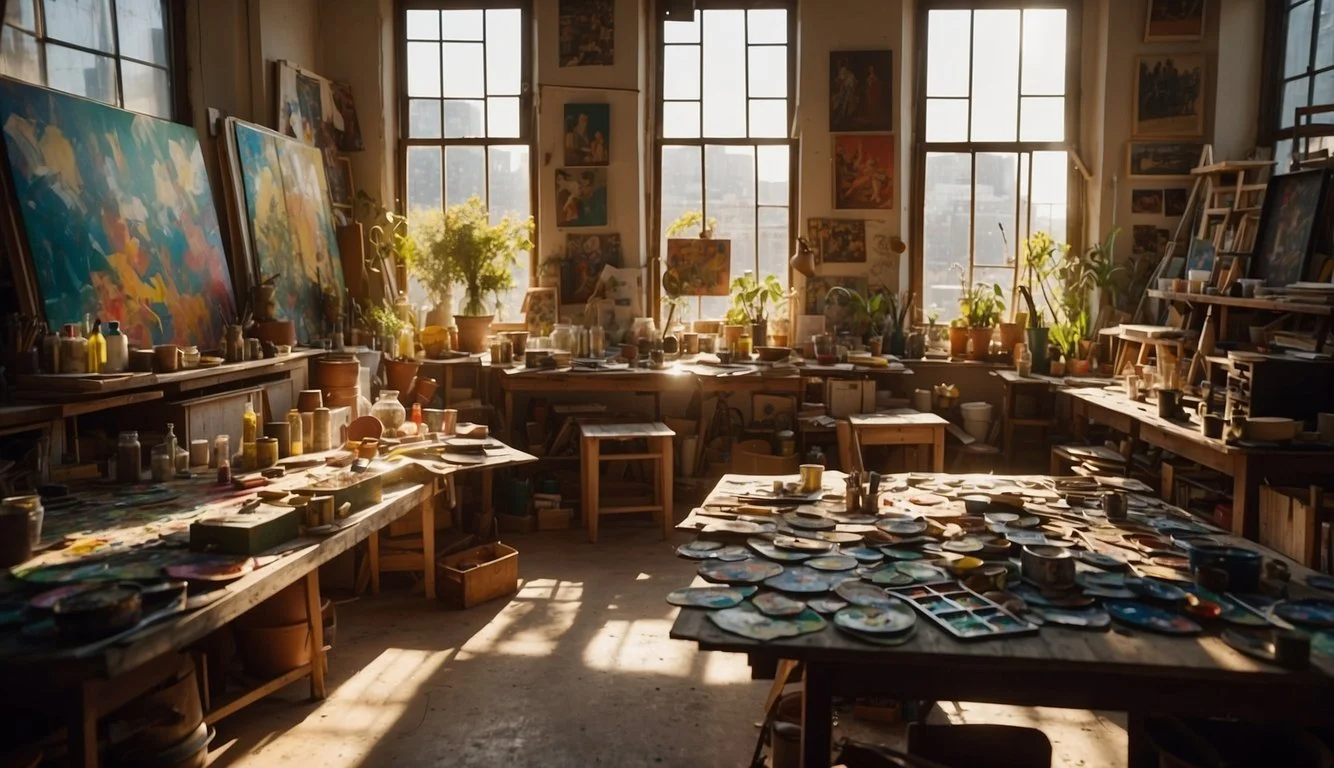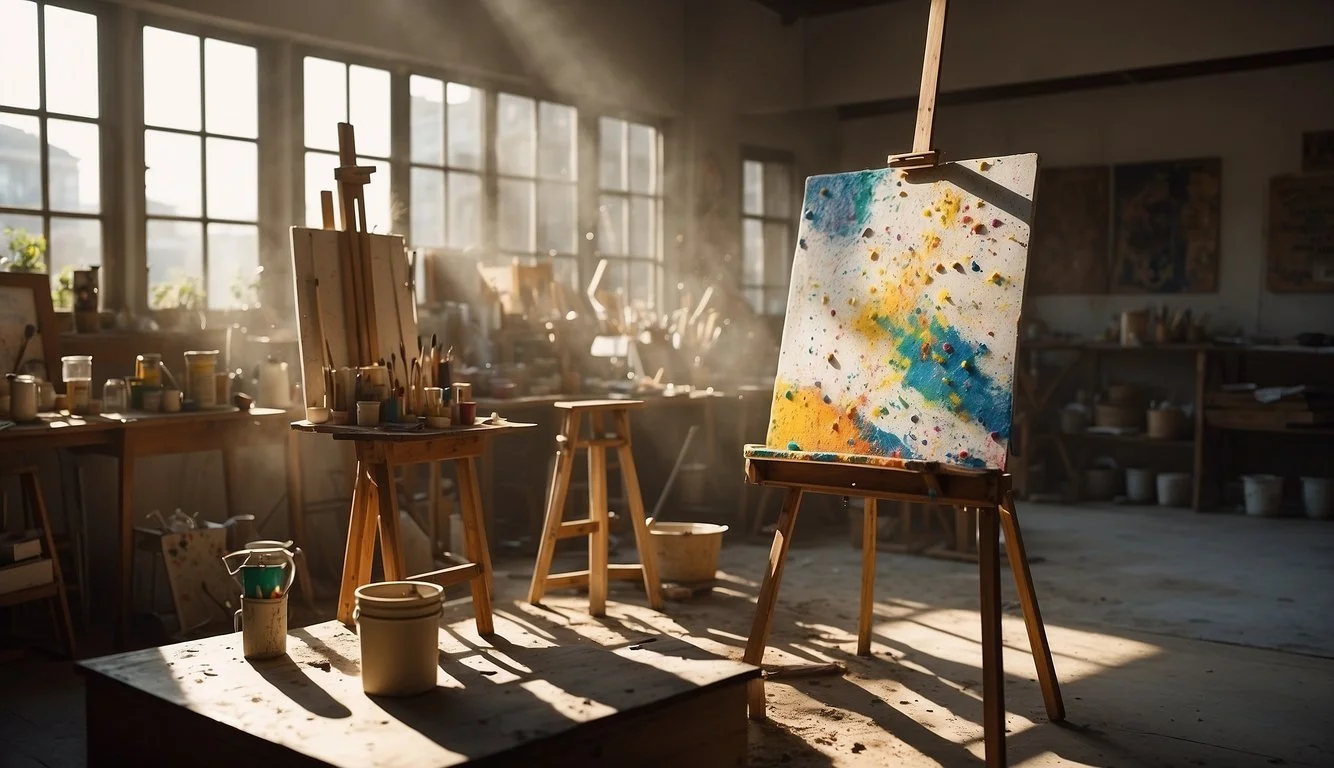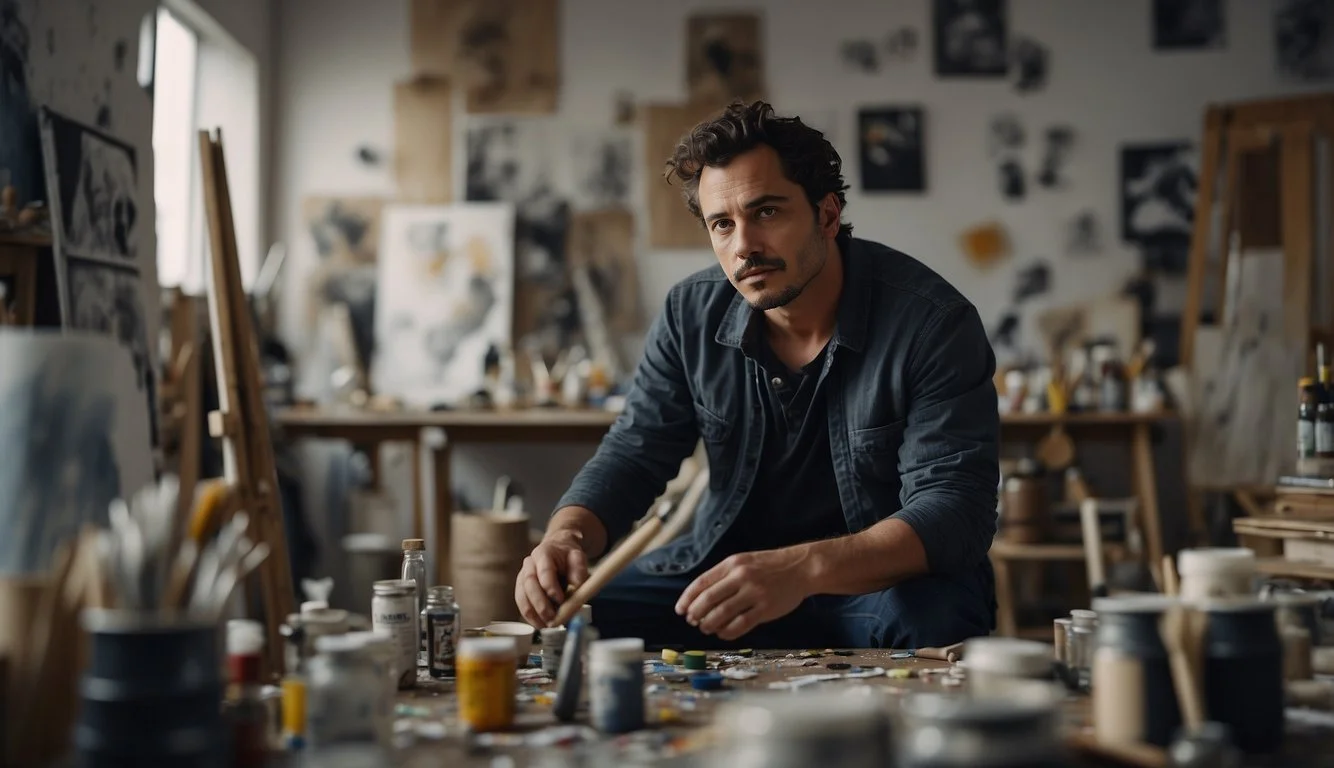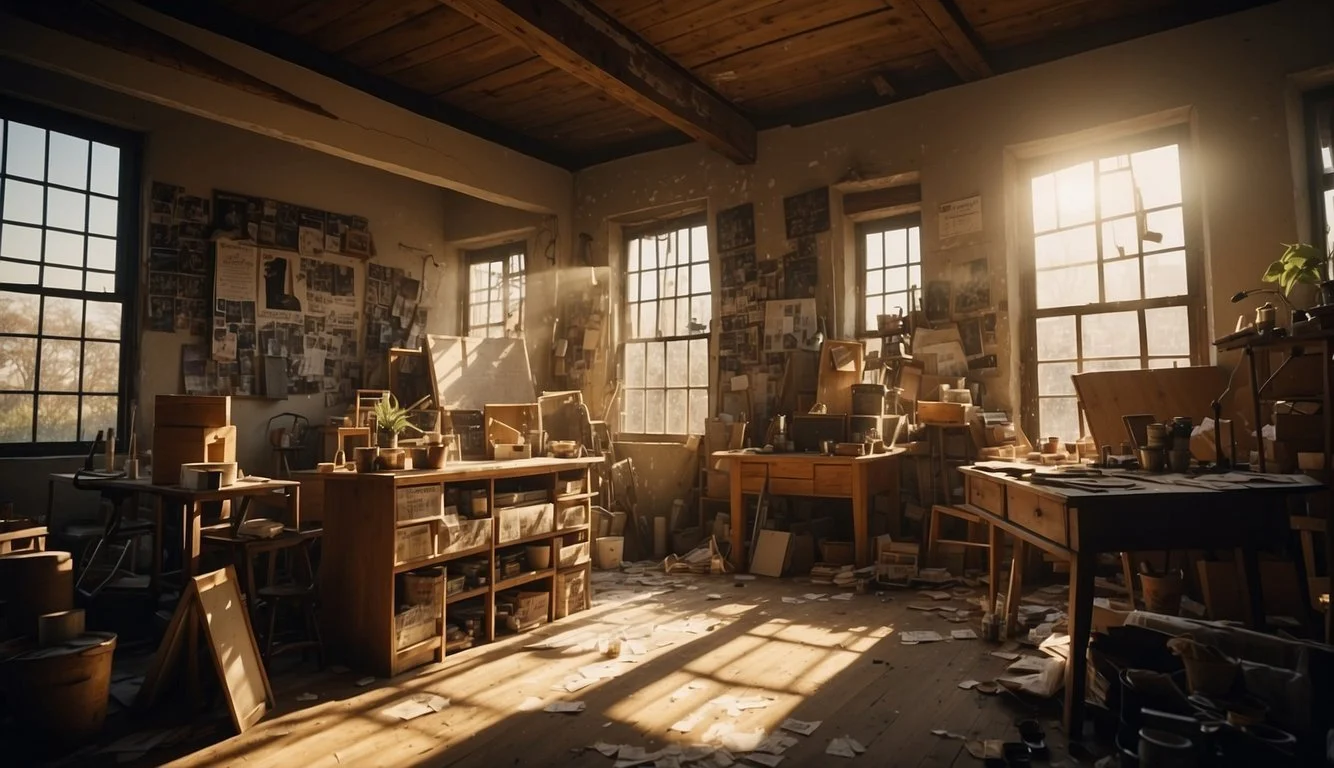Documentary Review: The Painter and the Thief (2020)
A Deep Dive into Forgiveness and Art
"The Painter and the Thief" (2020) documents an unlikely friendship between Barbora Kysilkova, a Czech artist, and Karl Bertil-Nordland, the man who stole her paintings. This fascinating true story explores themes of forgiveness, redemption, and the power of human connection. The film's intimate portrayal of these two individuals captures both their vulnerabilities and the transformative impact they have on one another.
Through the lens of Norwegian filmmaker Benjamin Ree, viewers witness the emotional evolution of both Kysilkova and Nordland. Their relationship evolves from one of crime and victimization to a deep and unexpected bond. As the narrative unfolds, the audience is drawn into a journey that feels both personal and universally relatable.
The documentary masterfully switches perspectives, allowing the audience to see the story through the eyes of both the painter and the thief. This dual viewpoint enriches the narrative, providing a deeper understanding of their complex relationship and highlighting the profound ways they influence each other's lives.
Overview of 'The Painter and the Thief'
The Painter and the Thief is a Norwegian documentary directed by Benjamin Ree. It tells the unique story of an artist and the thief who stole her paintings, exploring themes of redemption, empathy, and human connection.
Film Synopsis
The Painter and the Thief revolves around Czech artist Barbora Kysilkova and Karl-Bertil Nordland, the man who stole her paintings. After confronting him at his trial, Kysilkova asks to paint his portrait, leading to an unexpected and deep friendship. The documentary captures their interactions over several years, shedding light on their personal struggles and mutual transformations.
Director's Approach
Benjamin Ree uses an intimate and immersive filming style, providing a close look at the evolving relationship between Kysilkova and Nordland. The documentary switches perspectives between the artist and the thief, highlighting how both see and change each other. Ree’s approach emphasizes raw, emotional moments, often stepping back to let the subjects' genuine reactions and growth take center stage.
Critical Reception
The documentary received critical acclaim, winning a prize at Sundance for creative storytelling. Critics praised its ability to challenge viewers' perceptions and provoke thought about human nature. Reviews from outlets like Roger Ebert and Rotten Tomatoes noted the film’s deeply personal and emotional narrative, despite some commentary on its less impactful final act. Overall, it is appreciated for its candidness and storytelling strength.
Narrative Structure
"The Painter and the Thief" employs a complex narrative framework, featuring non-linear storytelling and rich character development that enhances the emotional depth and engagement of the film.
Non-Linear Storytelling
The documentary utilizes a non-linear structure, which continuously shifts backwards and forwards in time. This method allows the audience to see events from multiple perspectives, thereby deepening their understanding of the characters’ motivations and transformations.
The filmmaker contrasts the past and present to reveal key moments and decisions. Scenes are arranged to gradually disclose information, maintaining suspense and interest.
By not following a chronological order, the film emphasizes the emotional journeys over a straightforward sequence of events. This storytelling approach mirrors the unpredictability of real-life relationships and personal growth.
Character Development
Character development is paramount in "The Painter and the Thief." The film intimately explores the evolving relationship between the Czech painter, Barbora Kysilkova, and the thief, Karl-Bertil Nordland. Each character is given ample screen time, allowing the audience to witness their vulnerabilities and strengths.
The documentary portrays Bertil with compassion, focusing on his struggle with addiction and his gradual transformation. Barbora's reactions and her willingness to understand Bertil adds complexity to her character.
The detailed examination of their friendship provides a nuanced look at forgiveness and the human capacity for change. These character arcs are pivotal in making the audience feel invested in their journeys and outcomes.
Thematic Elements
The documentary "The Painter and the Thief" delves into profound themes such as forgiveness and the intricate relationship between art and personal identity, offering deep insights into human behavior and connections.
Themes of Forgiveness
Central to the narrative is the theme of forgiveness. The unexpected friendship between Czech artist Barbora Kysilkova and the thief, Karl-Bertil Nordland, showcases a transformative journey. After Bertil steals her paintings, Barbora astonishingly chooses to forgive him, leading to a profound bond. This relationship exemplifies how genuine understanding and compassion can emerge from moments of betrayal. The act of forgiveness becomes a catalyst for healing, allowing both individuals to rediscover and redefine their paths.
Exploration of Art and Identity
Art acts as a pivotal medium to explore identity in "The Painter and the Thief." Barbora, a painter, initially sees Karl-Bertil merely as the culprit behind the theft. However, as she paints his portrait, a deeper understanding of his troubled life unfolds. The documentary reveals how art enables Barbora to perceive facets of Karl-Bertil's identity that were previously hidden. Their relationship underscores how art can serve as a bridge between disparate lives, illustrating the power of creative expression in unveiling the complexities of human identity.
Cinematography and Visuals
The cinematography in "The Painter and the Thief" is both striking and intimate. The film's director, Benjamin Ree, utilizes a variety of camera techniques to draw the viewer into the complex relationship between the painter, Barbora Kysilkova, and the thief, Karl-Bertil Nordland.
Key Techniques
Close-ups: Frequent close-ups are used to capture the raw emotions on the faces of Barbora and Karl-Bertil. These shots create a sense of intimacy and personal connection.
Switching Perspectives: The film shifts perspectives between Barbora and Karl-Bertil, illustrating how each sees and interprets their shared experiences. This method highlights the evolving dynamic between the two characters.
Natural Lighting: The use of natural light enhances the documentary's authentic and organic feel. Scenes often appear raw and unfiltered, reflecting the genuine nature of their interactions.
Visual Aesthetics
The documentary employs a minimalistic color palette. This choice reinforces the stark contrast between the worlds of the painter and the thief. The simplicity of the visual style allows the emotional depth of the narrative to take center stage.
Barbora's studio, filled with half-finished paintings and art supplies, serves as a visually compelling backdrop. It visually represents her chaotic yet creative mind. Conversely, scenes featuring Karl-Bertil often reflect the grittiness of his life, adding to the visual storytelling.
Symbolic Imagery
The visuals in "The Painter and the Thief" often carry symbolic weight. For example, the paintings Barbora creates of Karl-Bertil symbolize their growing mutual understanding and bond. These visual metaphors are woven throughout the film, enhancing its thematic depth.
By combining these elements, the cinematography and visuals of "The Painter and the Thief" enrich the documentary, making it a profoundly moving experience.
Editing and Pacing
The Painter and the Thief takes a unique approach with its narrative, reflected in its editing and pacing. The film adopts a non-linear structure, blending moments from different times to create a layered storytelling experience.
The transitions between scenes are smooth, offering a cohesive yet intricate portrayal of both the painter and the thief.
Benjamin Ree's decision to switch perspectives between the painter and the thief midway adds depth. This shift not only keeps the audience engaged but also provides a broader understanding of the characters.
Key techniques include:
Jump Cuts: To juxtapose different emotional states and timelines.
Long Takes: To capture the intimacy between the subjects.
Montages: To condense time and build a comprehensive narrative arc.
The pacing is deliberately measured, allowing for full emotional development. Scenes are neither rushed nor dragged out, striking a balance that maintains viewer interest.
The editing style emphasizes realism. There is minimal use of stylized elements, enabling the story to unfold organically. This approach ensures that each moment resonates with authenticity.
These editing choices foster a rhythm that mirrors the evolving relationship between the subjects. By weaving their stories together seamlessly, the documentary captures the complexity of human connections.
Soundtrack and Score
The soundtrack for The Painter and the Thief is composed by Uno Helmersson, known for his work on Armadillo, Magnus, The Lion Woman, 22. Juli, On the President's Order, and Bobbi Jene. His music plays a significant role in shaping the film's atmosphere.
The album was released by Milan Records and is available for streaming and download on Amazon. The score includes several tracks that enhance the emotional depth of the documentary.
Helmersson's compositions range from haunting to uplifting, creating a dynamic auditory experience. The music supports key moments in the film, such as the development of the friendship between the artist and the thief.
Track List Highlights:
Emotional peaks during pivotal scenes
Subtle background scores that underline the documentary's themes
Eerie sequences during moments of tension
The soundtrack helps to illustrate the film’s powerful narrative, complementing the visual storytelling with an auditory counterpart that enriches the viewer's experience.
Critical Analysis
The Painter and the Thief (2020) delves into the intriguing relationship between a Czech painter and the thief who stole her artworks. A unique narrative approach drives the film's emotional depth.
Director Benjamin Ree ingeniously shifts perspectives between the painter, Barbora Kysilkova, and the thief, Karl-Bertil Nordland. This technique allows viewers to deeply understand both characters' motivations and vulnerabilities, making their bond both unexpected and compelling.
Strengths:
Narrative Structure: The alternating viewpoints offer a balanced portrayal.
Character Development: Nordland's transformation is particularly well-documented.
Cinematography: Intimate shots create a closeness between the audience and the subjects.
Weaknesses:
Pacing: The film's third act lacks the intensity of the initial segments.
Resolution: Some viewers may find the ending less satisfying.
Visually, Ree uses tight framing and close-ups to enhance the sense of intimacy. The documentary avoids over-dramatization, focusing instead on genuine human emotions. Both leads are portrayed with remarkable empathy, showcasing their flaws and strengths equally.
Ultimately, The Painter and the Thief presents a nuanced look at forgiveness, redemption, and the complexities of human relationships. It raises thought-provoking questions about the nature of art and its impact on both the creator and the observer.
Cultural and Social Impact
"The Painter and the Thief" offers a profound exploration of the human connections that transcend societal norms and personal backgrounds. Its impact resonates both within Norwegian society and globally, influencing perceptions of friendship and redemption.
Impact on Norwegian Society
In Norway, where the story unfolds, the documentary initiated significant discussions on empathy and forgiveness. The relationship between Barbora Kysilkova and the thief, Karl-Bertil Nordland, challenged conventional views on crime and punishment.
Their friendship encouraged Norwegians to reconsider their attitudes toward rehabilitation and social reintegration. The documentary's portrayal of these themes was influential in promoting more holistic approaches to dealing with offenders, highlighting the importance of understanding individual narratives.
International Reception
Globally, "The Painter and the Thief" received critical acclaim for its intimate storytelling and emotional depth. The film resonated with international audiences by highlighting universal themes of compassion and second chances.
Premiering at the 2020 Sundance Film Festival, it garnered the Special Jury Prize for Creative Storytelling. The film's success underscores its ability to cross cultural boundaries and provoke discourse on the transformative power of human connection and shared experiences.
Concluding Thoughts
"The Painter and the Thief" offers a remarkable look at the complex human emotions and relationships. It captures the bond between the artist Barbora Kysilkova and the thief, Karl-Bertil Nordland, whose unexpected friendship becomes the crux of the narrative.
The documentary excels in its character-driven storytelling. Audiences witness transformative moments as Kysilkova and Nordland grow from strangers to confidants. This evolution is presented with a raw and intimate lens, allowing genuine insight into their lives.
Visually, the film employs a style that enhances its emotional impact. The alternating perspectives between painter and thief add depth, making the story engaging. The shifts in viewpoint highlight the dual nature of their relationship and understanding.
Despite this, some viewers may feel the film loses momentum towards the end. The initial intrigue might fizzle out, leading to a less gripping third act. This shift in pace could affect overall viewer engagement.
Nonetheless, the genuine portrayal of vulnerability and redemption makes this documentary a compelling watch. It provides a heartfelt narrative that challenges perceptions and showcases the possibility of unexpected connections. The film underscores the complexities of human connection and the transformative power of empathy and forgiveness.

